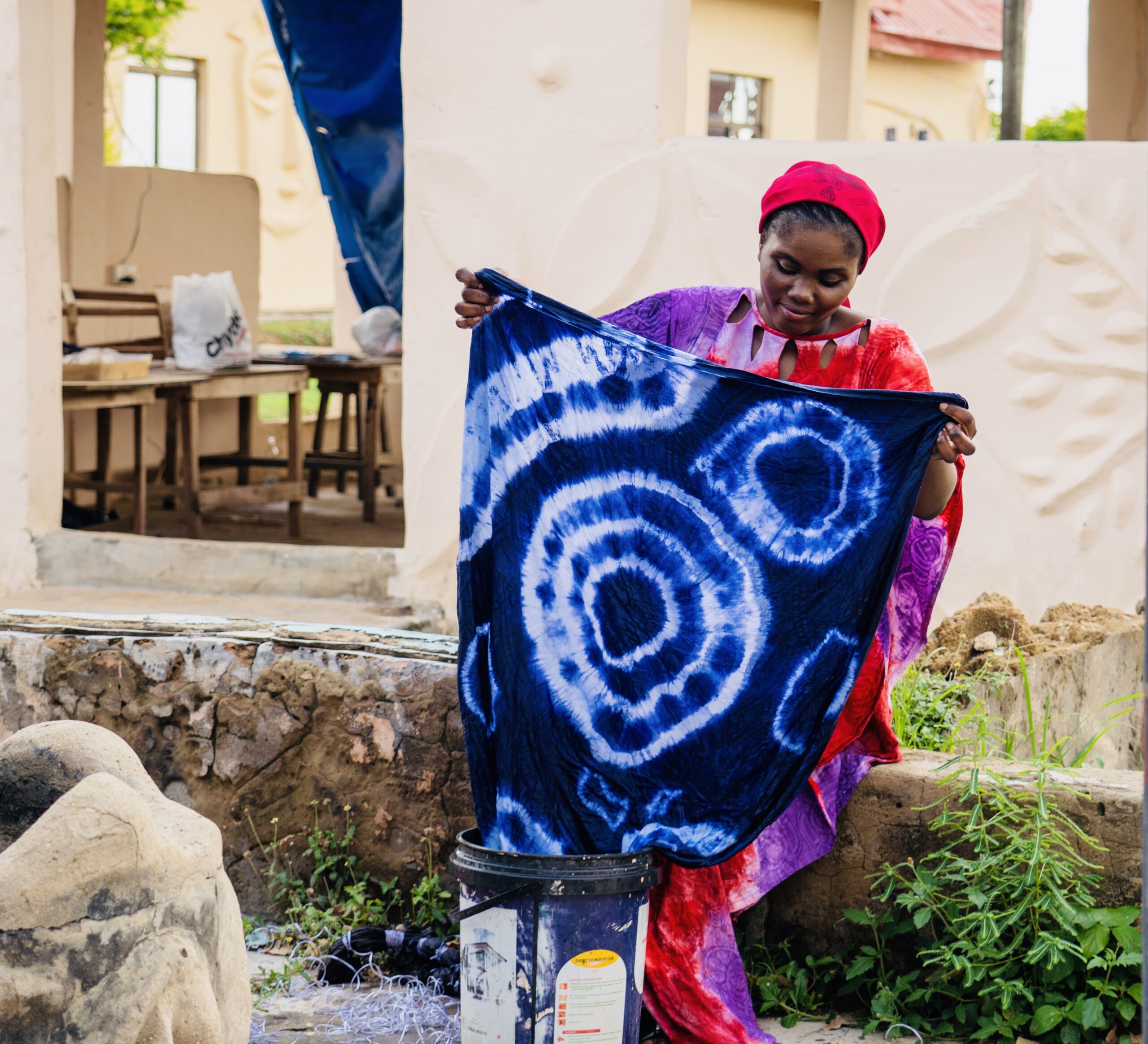For Star Zahra, her journey into the world of creative arts was more of a legacy than a career choice. Her earliest memories are filled with images of white sheets of paper, often rolled together and bound with rubber bands.
“I grew up with a writer. My dad was a writer. I never thought of him this way until many years later as a grown woman myself and a writer too,” she reflects.
After spending years in the corporate world, Zahra’s father transitioned into a full-time pastor, cherishing and producing Christian literature. Much like the Apostle Paul, he spent countless hours behind closed doors, documenting essential wisdom for the church. This writerly passion soon rubbed off on Zahra, who followed in her father’s footsteps at the tender age of 14. “Writing for me started with trying my hands at Christian literature,” she recalls.
Years later, Star Zahra has emerged as a vibrant storyteller, using poetry and textile designs to celebrate African culture. Her creative mediums serve to evoke the rich tradition of African storytelling, presenting narratives that highlight the continent’s heritage in the most artistic ways.
Zahra’s literary journey began with her first collection of poetry, “The Dance of Dawn,” published at age 17 by AMAB Books. This work was later adopted as an introductory text for a poetry course at the University of Abuja.
In 2024, Mosobe Books published her second poetry collection, “Girls and the Silhouette of Form.” Despite her young age, Zahra has judged numerous prestigious poetry contests and served as the editor of Guesthouse Magazine, an Iowa-based journal for poetry and essays.
Textile Arts
Zahra’s passion for textile arts is a familial inheritance, much like her love for writing. Her maternal grandfather worked at the Kaduna Textile Factory until his death before Zahra was born. This connection to textiles inspired her fascination with transforming beautiful designs into clothing.
“As a little girl, I sketched dress designs in a notebook, but I never thought I’d one day venture into textiles,” she reminisces.
What began as a childhood hobby of sketching dresses evolved into a profound interest in textile creation. In 2020, Zahra’s passion was further ignited by an eye-opening tour of the Nike Research Centre for Arts and Culture. Captivated by the center’s vibrant atmosphere, she dedicated two years to learning the intricate art of textile design. Studying under seasoned artisans, she honed her skills and developed a deep appreciation for the cultural heritage woven into each fabric.
The Nike Centre for Art and Culture in Lagos offers training in various artistic disciplines to both Nigerians and expatriates. Established in 1983 by renowned artist Nike Davies-Okundaye, the center has nurtured artistic talent and creativity for over three decades, providing a platform for individuals, especially women like Star, to explore and develop their skills.
Star Zahra’s work is deeply rooted in Nigeria’s diverse culture. “My work is very much rooted in our culture here. Both as a writer and an artist. From the many colorful batik patterns of the south to the bright Indigo of Kofar Mata,” she explains. Her poetry and textile designs reflect her experiences as a Nigerian in a globalized world, capturing and highlighting her feelings through her art.
A special interest in African works has significantly influenced Zahra’s creations, predominantly produced with cotton fabrics featuring African inscriptions. Her favorite fabric is shadda, popular for kaftans. However, she often faces the challenge of sourcing local materials, leading her to use imported fabrics, underscoring a gap in Nigeria’s textile production.
In 2023, despite a N500 billion investment in the Nigerian textile industry, the sector failed to grow. Over 90% of textile products in Nigerian markets are smuggled or imported, undermining local production.
Balancing traditional techniques with modern styles, Zahra says, “Cultural practices are being exhumed and we are molding the muscles of modernity to them. I am not left out of the pack. It’s usually a matter of cultural preservation and the evolution of our heritage. I’m very passionate about these.”
Star Zahra’s works have been exhibited at the United Nations House, the Engaging Borders Africa project, and the British Council Nigeria. At the heart of her work lies a desire for cultural preservation and the sustainability of African expression in a chaotic global space.
She holds certifications in Media and Arts for Peace, Communication for Development, and Cultural Arts Strategy. Her recent project, UPCYCLED, explores the role of designers in combating waste and promoting sustainable fashion practices.
Despite her remarkable achievements, Zahra acknowledges the challenges she faces. “I’d always refuse to be limited because I’m a woman. I have strength in my bones and a brain in my head, and we all have these,” she asserts.
Looking forward, Star hopes to reflect on her life and see that she made the best of her years.






